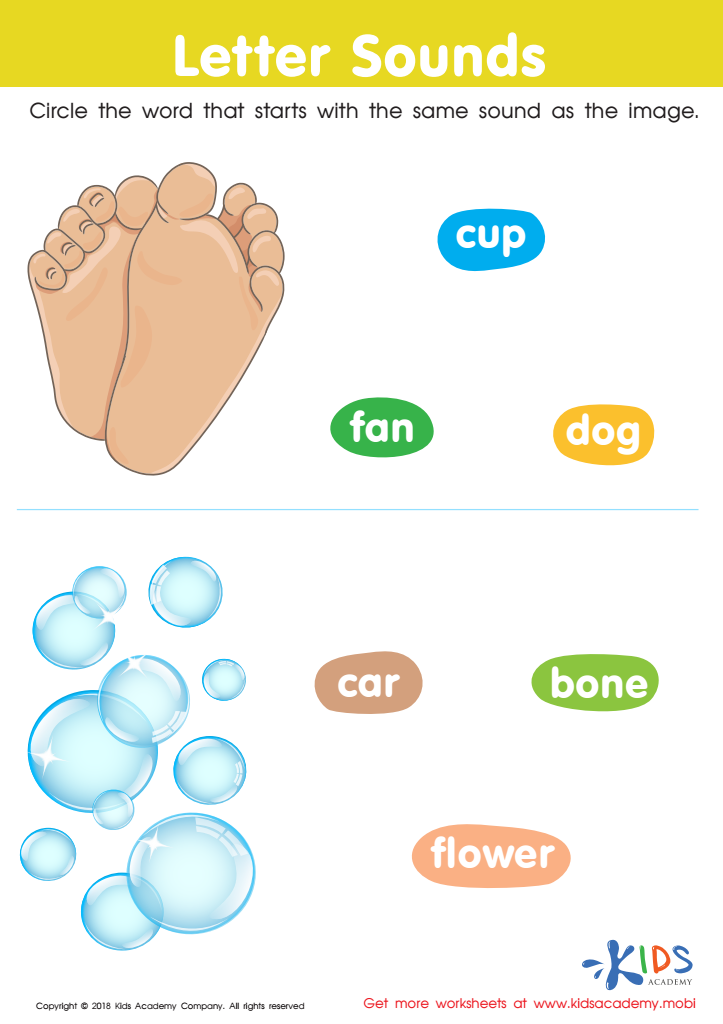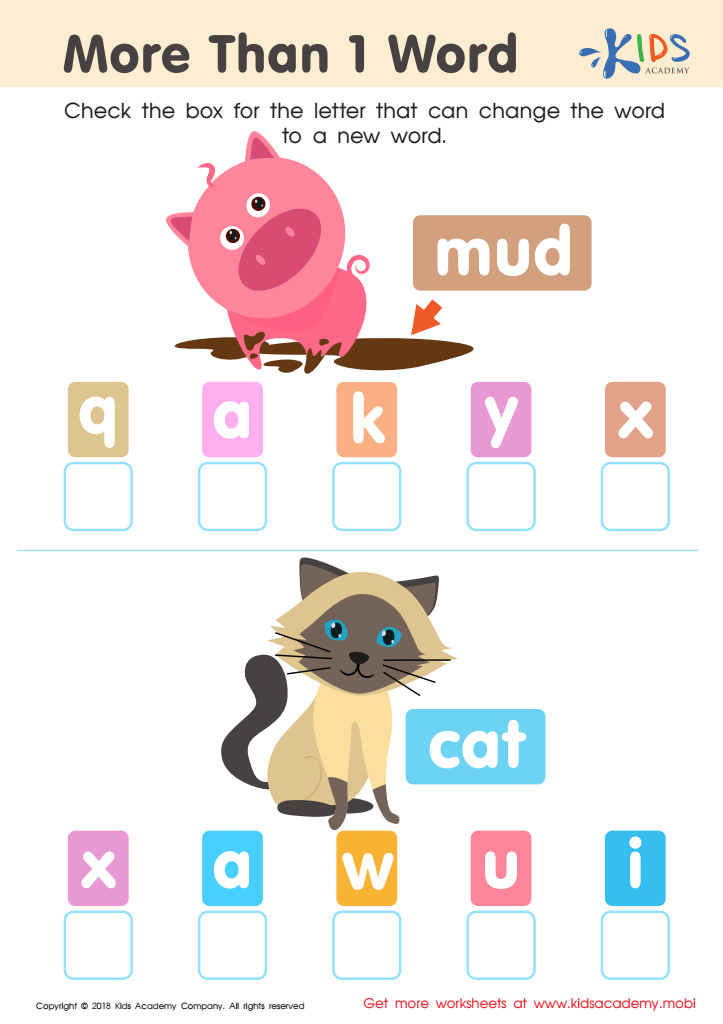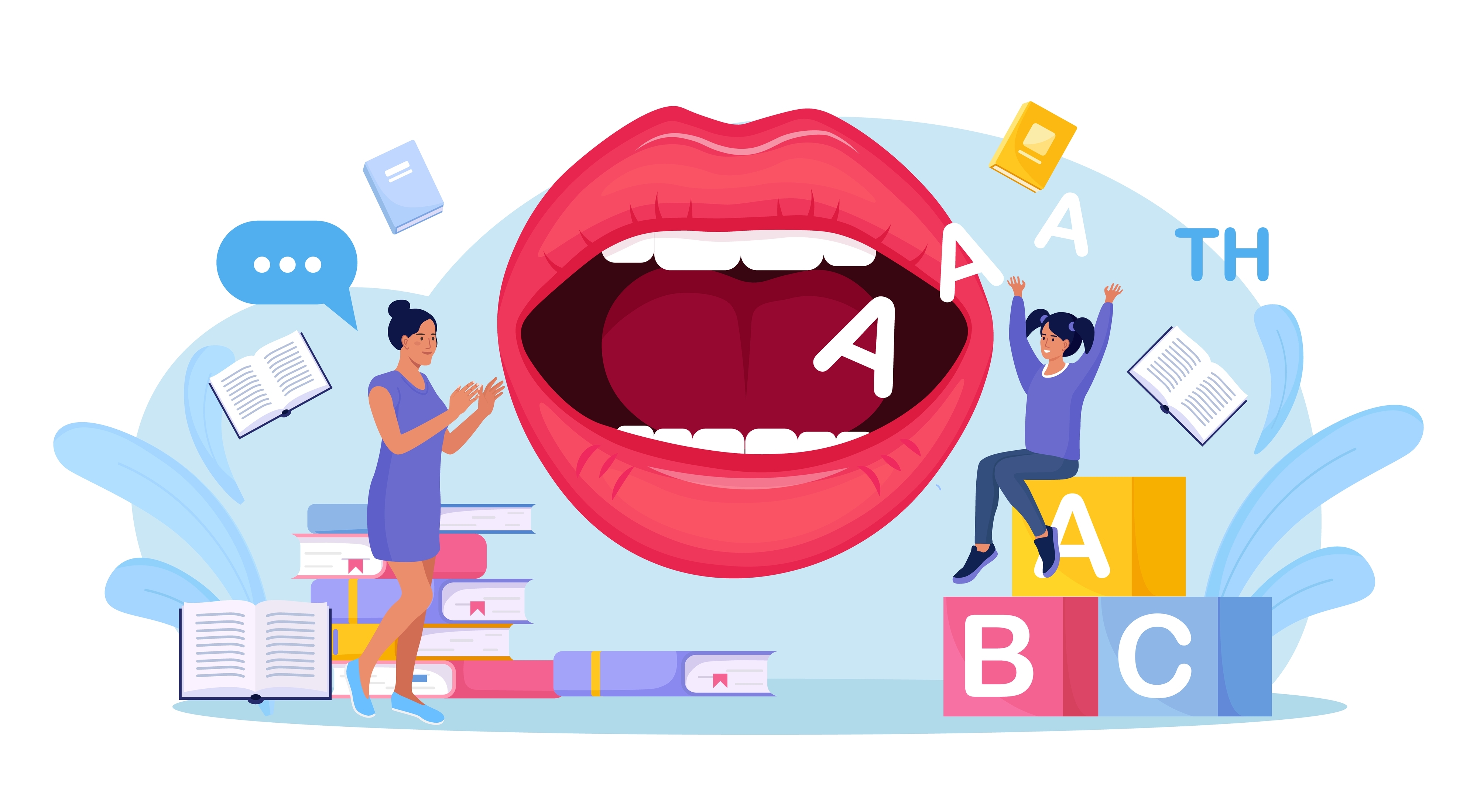Letter Sounds Worksheets Activities With Answers for Ages 4-6
2 filtered results
-
From - To


letter sounds Worksheet


More than 1 word Worksheet
Letter Sounds Worksheets Activities with Answers are a fundamental resource for educators, parents, and students in the journey of learning how to read and write. These activities effectively combine the visual recognition of letters with the auditory understanding of their corresponding sounds, a crucial skill for early literacy development. By engaging with these worksheets, learners can bridge the gap between recognizing letters and understanding how they function together to create words.
One of the primary advantages of Letter Sounds Worksheets Activities with Answers is that they provide immediate feedback. Whether in a classroom setting or at home, students can work through the exercises and check their answers, allowing for self-assessment and independent learning. This instant verification helps to reinforce correct understanding and quickly address any misconceptions, ensuring a solid foundation in phonics is built.
Furthermore, these worksheets are designed to cater to a variety of learning styles. For visual learners, the letters and accompanying images help to create connections between the symbol and its sound. For auditory learners, saying the sounds out loud as they work through the activities strengthens their phonemic awareness. Additionally, for those who learn best through hands-on activities, cutting, pasting, and matching exercises make learning interactive and engaging.
The versatility of Letter Sounds Worksheets Activities with Answers also allows for differentiation. Educators can easily adapt the level of difficulty to meet the diverse needs within their classroom, ensuring that all students are both challenged and supported. For struggling learners, starting with simpler sounds and gradually increasing complexity can boost confidence, while more advanced students might benefit from worksheets that introduce blend sounds or digraphs.
In conclusion, Letter Sounds Worksheets Activities with Answers are an invaluable tool in the early stages of literacy development. They foster an understanding of the fundamental building blocks of language, promote independent learning, and accommodate diverse educational needs, all of which are critical for nurturing proficient readers and writers.
 Assign to the classroom
Assign to the classroom











